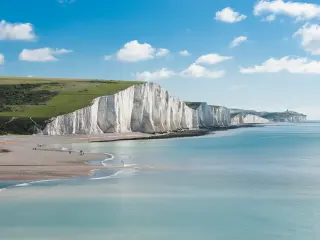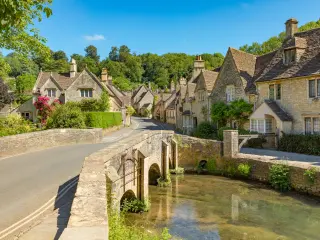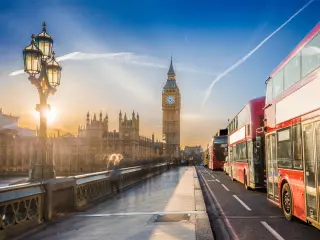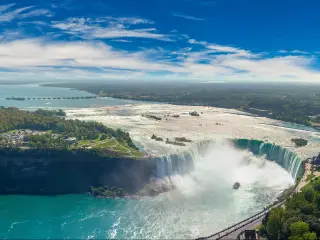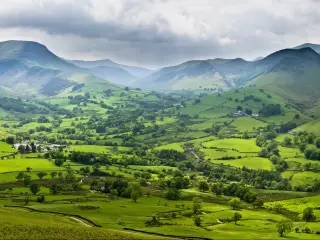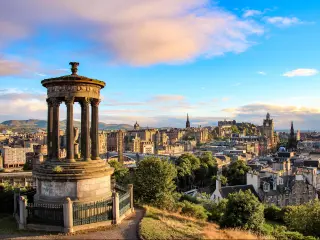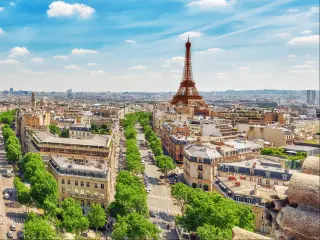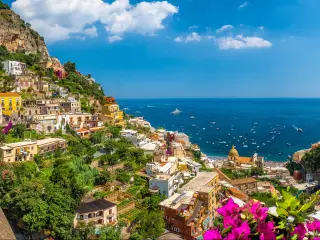Road Trip from London to Scotland
This round trip route from London to Scotland and back showcases some of the most stunning parts of Scotland, taking you through its biggest cities, out to the Isle of Skye and past countless lochs and mountains as you travel across the Highlands.
It takes 32 hours to drive the 1,490-mile round trip from London to Scotland. You'll pass Oxford, the Lake District and Glasgow then Fort William, Skye and Loch Ness in the Highlands, returning via Edinburgh, the Northumberland coast, York and Cambridge.
There's something for every taste on this road trip, with fabulous views and amazing hiking opportunities, plus cultural attractions in the vibrant cities of Edinburgh and Glasgow. There's also plenty to see and do on the drive north through England, so keep on reading to find out what this epic drive has in store.
How far is Scotland from London, and how long will the road trip take?
| Route | Distance | Driving Time |
|---|---|---|
| Outbound Route to Loch Ness | 800 miles | 17 hours |
| Return Route to London | 690 miles | 15 hours |
This is one of the longest road trips you can take through the British Isles - the Scottish border is around 8 hours' drive from London and you'll have to cover another 400 miles before you reach Loch Ness and start to make your way south again to London.
In total, this road trip will take around 32 hours to drive, and that's without allowing any time to stop and enjoy the places you'll see along the way.
To get maximum enjoyment from this trip we'd suggest taking around 10 days for your journey, but you could comfortably fill longer than this if you stop more often along the way, especially if you're planning on hill walking in the Highlands, the Cairngorms or in England's national parks.
Expect traffic around Birmingham and Glasgow at peak times, which could hold you up if you're on a tight schedule and remember that after Glasgow the roads can be much smaller so take your time and pass carefully if you get stuck behind a slow moving vehicle.
Although the UK as a whole isn't known for its extreme weather conditions, you should be prepared for snow and some fairly long stretches between stops as you travel through the Highlands, so don't leave it to the last minute to refuel. If you're driving in winter keep water and snacks in the car in case poor driving conditions slow you down.
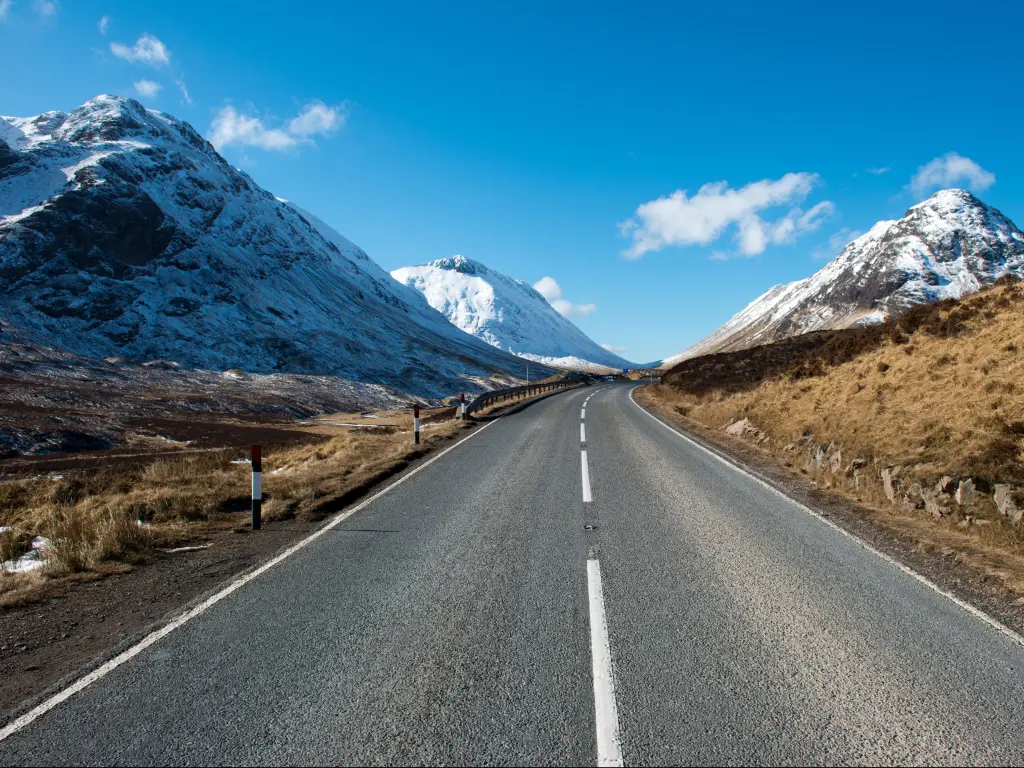
Best road trip route from London to Scotland
The journey north through England follows motorways for much of the way, so you can make your way north quickly, with a few slightly slower sections where you'll detour onto local roads.
The suggested stops along the way let you explore historic sights and beautiful national parks, before crossing the border into Scotland and on past Glasgow to reach the Highlands. The amazing scenery is interspersed with castles, lochs, outdoor activities and picturesque villages - and you can find a distillery or two to tour if you're interested.
As you reach the most northerly point of this road trip you still have a stretch of fabulous scenery to enjoy, with the drive through Cairngorms National Park and then past the smaller lochs around Pitlochry.
The road crosses the Firth of Forth before heading into Edinburgh, famous for its cultural and historic attractions, before continuing back across the border into England. The stunning coastlines of Northumberland and Yorkshire await before the road swings inland through the historic cities of York and Cambridge.
The Outbound Route
Follow the M40 motorway west out of London, passing Oxford, Bicester and Banbury before you reach Birmingham around an hour later.
As you approach Telford, take the exit towards Madeley and Ironbridge to explore this beautiful setting on the banks of the River Severn, which was once home to some of the country's first industrial powerhouses.
From here, the road runs parallel to the River Severn until you reach Shrewsbury. Then follow the A5 north in the direction of Chester.
Leaving Chester to the north, pick up the M56 then change onto the M6 which you'll follow all the way to Gretna Green on the Scottish border. Along the way you'll pass Preston, the Lake District and Penrith before arriving in Scotland.
From the border the road runs direct to Glasgow, Scotland's biggest city. After spending some time in the city head west to continue on your trip, crossing the River Clyde via the Erskine Bridge, then follow the A82 which runs along the whole of the western shore of Loch Lomond.
Continue along the same road to make your way north through the Highlands. You'll pass Crianlarich, Loch Tulla and Rannoch Moor before reaching Glencoe then passing Ben Nevis on your way to Fort William.
From Spean Bridge the road takes you along Loch Lochy before you finally turn off onto the A87 at Invergarry. Then, at Kyle of Lochalsh take the Skye Bridge from where the same road takes you across the Isle of Skye as far as Portree.
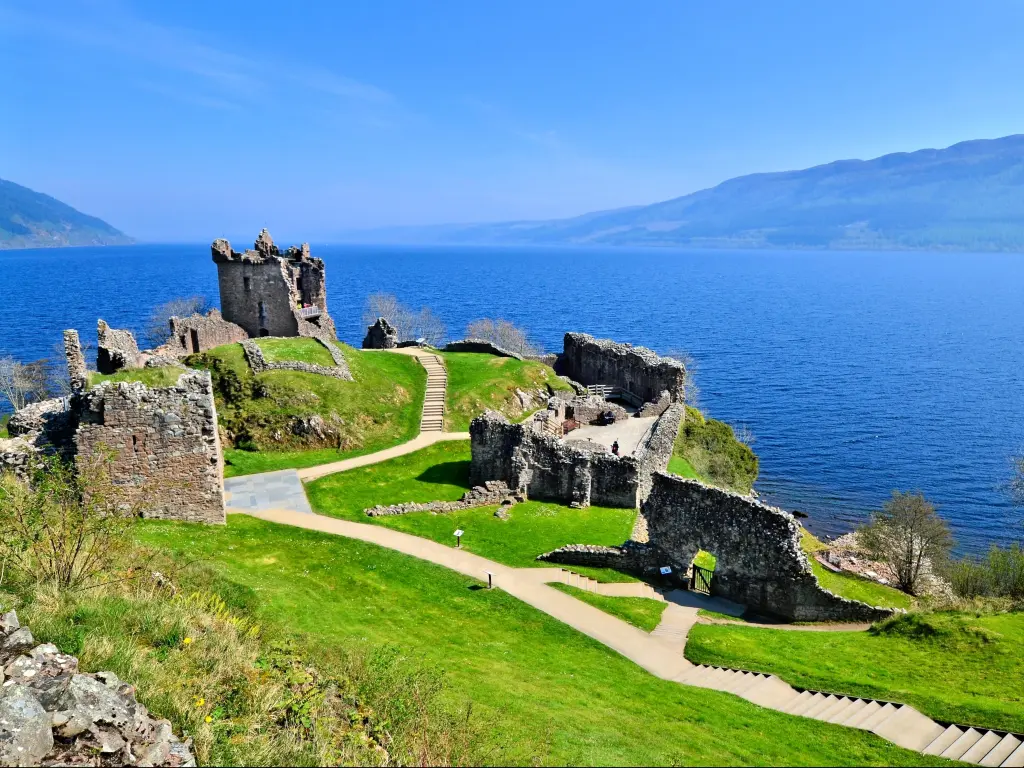
From here, retrace your journey back across to the mainland, continuing straight ahead towards Invermoriston where the road divides, then following the road to Fort Augustus and along the eastern shore of Loch Ness.
The Return Route
Make your way to the northern end of Loch Ness to the city of Inverness, from where you'll make your way south to London.
The A9 takes you south past the Cairngorms National Park, through Aviemore and on towards Pitlochry and Perth, where you'll pick up the motorway towards Edinburgh.
From Edinburgh, the A1 runs parallel to the Northumberland Coast, and you can detour to the beautiful beaches and coastal villages of Bamburgh, Seahouses and Craster before arriving in Newcastle upon Tyne.
From Newcastle take the A1(M) to Durham then head southeast out of the city towards Middlesborough, where you'll cross River Tees before joining up with the A171 which heads east across North York Moors National Park to the coast at Whitby.
Next, follow the road across the moors to York then merge onto the M1 which takes you to the south of Leeds and past Yorkshire Sculpture Park before you turn off at Tankersley to wind your way through the Peak District via Thornhill and Bakewell.
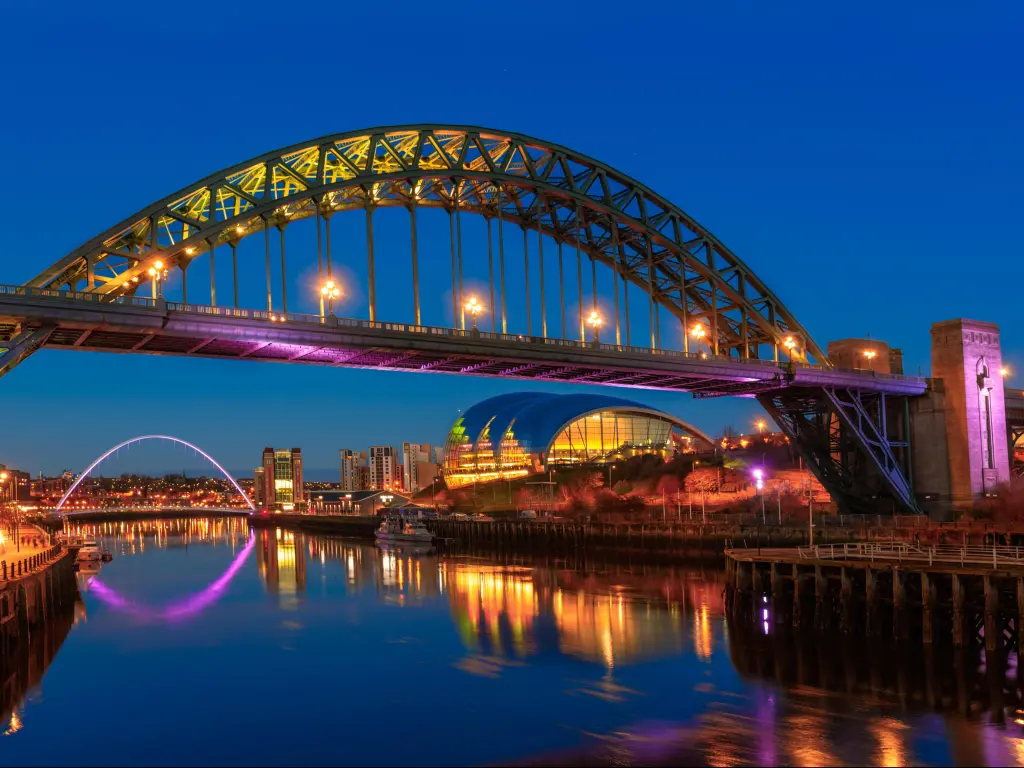
From Bakewell, return to the M1 then turn off to cross Nottingham. Next, pick up the A52 to reach the A1, which you'll follow south past Peterborough and Huntingdon before turning off to visit Cambridge.
After spending some time in the university town, all that's left is to head back out to the motorway which takes you all the way back to London.
Best places to stop between London and Scotland
Seeing as you'll be covering nearly 1,500 miles on this round trip, you'll need to make a number of overnight stops to take in the beauty that will surround you and to rest up before the next leg of your trip.
Step back in time in Chester
Chester is located 5 hours from London, so you can easily get here in a day from London if you're not stopping overnight in Oxford or Ironbridge along the way.
Founded by the Romans in 79AD, Chester is also famous for its location and historic attractions, with historic black and white timbered houses all around the city centre.
Visit Britain's biggest Roman amphitheatre or take an informative tour with a gladiator for your guide, then walk around the city via the 2-mile long wall which still runs right around it, with parts dating back to Roman times.
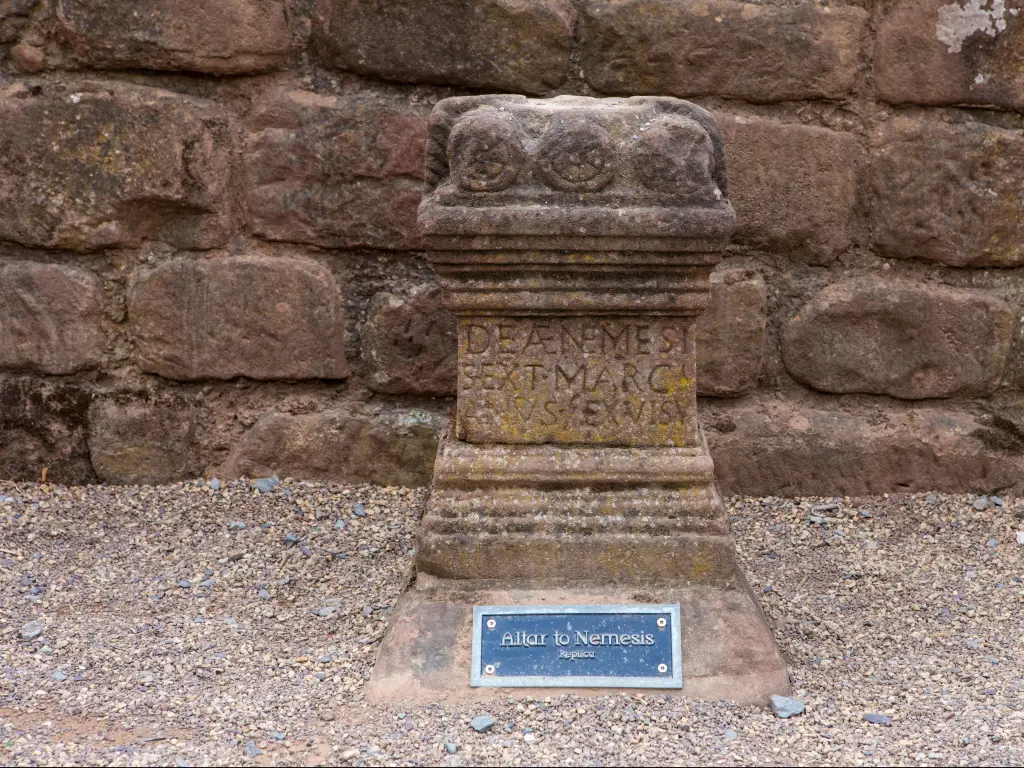
At the Grosvenor Museum you can find out more about the county's extensive history, with art and exhibits covering Roman times to the 20th Century, including Cheshire's industrial revolution heritage.
The luxurious rooms at The Chester Grosvenor combine traditional English style with modern comfort. Relax with a cocktail in the ornate bar or wake up to a full English breakfast cooked to your requirements. Spa treatments including a salt grotto are also available.
The hotel is centrally located within walking distance of all the sights including the Cathedral, Roman Gardens, River Dee and Grosvenor Museum. Parking is available in the neighbouring car park at reduced rates
Travel over the sea to Skye
300 miles after crossing the border from England to Scotland, you'll reach the beautiful Isle of Skye. From here it's another 2 hours 40 minutes before you reach Loch Ness, where you'll start to make your way south again to London.
With its colourful houses, quaint harbour and stunning views, Portree is a great place to base yourself while you explore the Isle of Skye.
Around Skye there are countless opportunities to enjoy outdoor activities, including sea kayaking, fishing trips, wildlife tours - minke whales are occasionally spotted as well as eagles, dolphins and seals - plus some fantastic hiking.
You can take a tour of the Talisker Distillery which has had its home on Skye for nearly 200 years to see how this iconic Scottish tipple is produced, or head to the newly founded Raasay or Torabhaig Distilleries. They're all in beautiful settings, and all offer visitors a wee dram.
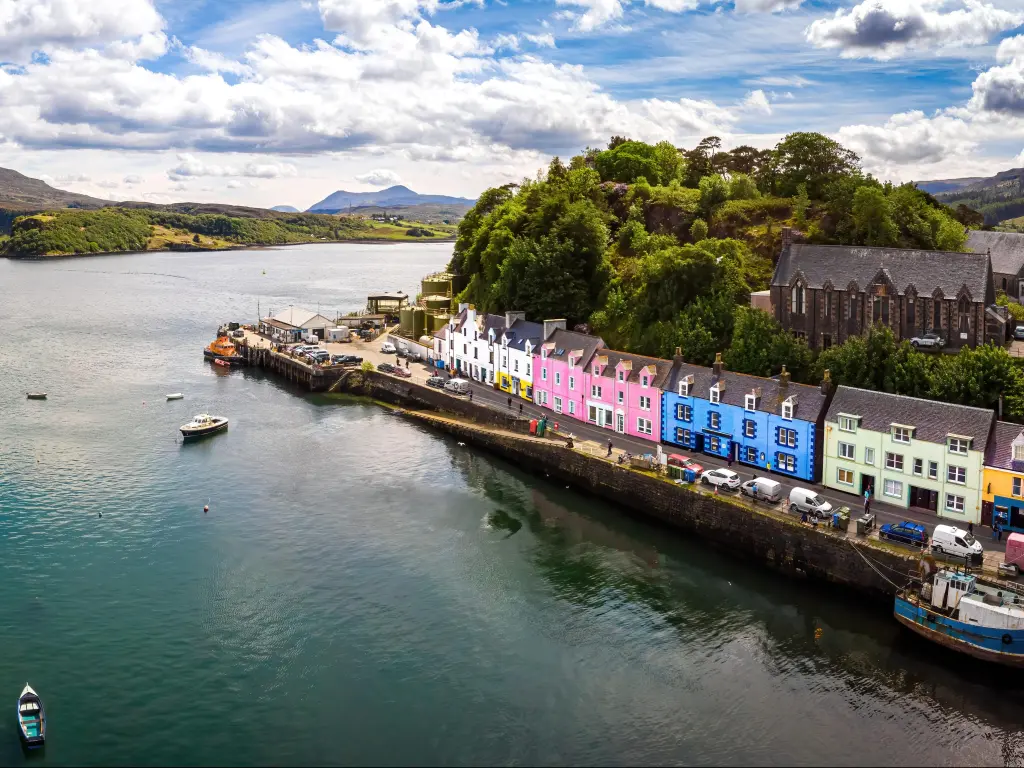
Dunvegan Castle, which overlooks the sea, has been home to the MacLeod family for over 800 years, and is packed full of art and heirlooms. It also has beautiful gardens.
The Museum of Island Life is also well worth a visit. This open-air museum has a series of traditional thatched cottages which show what life was like on the island in the 19th century.
Just off the main road through Skye you'll find the Cuillin Hills Hotel, Portree. It has cosy and comfortable rooms with modern Scottish décor, and unforgettable views out across the water and mountains.
The hotel's on-site restaurant focuses on quality local ingredients, and you can warm up by the open fire in the guest lounge after a day outdoors.
Walk the Royal Mile in Edinburgh
There's plenty to see and do in Scotland's capital city, which you'll reach around 3 and a half hours after leaving Loch Ness as you head back to London. After the drive through wilder parts of Scotland it's a great place to enjoy the more urban cafes, bars and culture Scotland has to offer.
Edinburgh, renowned for its summer festivals including Edinburgh International Festival and the parallel Fringe festival, has impressive and varied architecture, with different parts of the city each having their own distinct character.
The 900-year-old Edinburgh Castle is unmissable as it sits on top of a rock looking down across the city. Here you can see the the Honours of Scotland – Scotland's crown jewels – and find out more about the castle's royal heritage.
Next, take a walk along the cobbled, shop-lined Royal Mile which runs from the castle to Holyrood Palace then take a tour of the King's official Scottish residence to see the State Apartments and the ruins of the abbey that previously stood on the site.
Elsewhere in the city you'll find the National Museum of Scotland, a fascinating and varied collection inside a beautifully renovated galleried building.
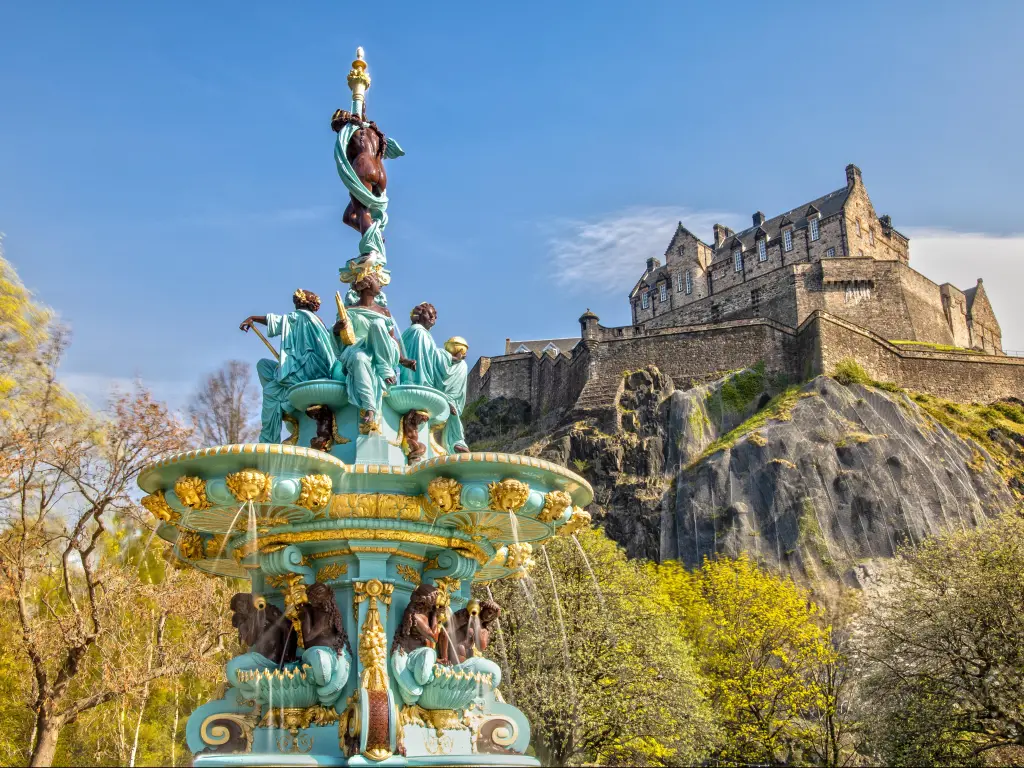
And if you're keen to carry on hiking after spending so much time on this trip in the great outdoors, head to Arthur's Seat, an extinct volcano on the edge of the city, for stunning views across Edinburgh and the Firth of Forth.
A quirky mid-century modern vibe runs through Native Edinburgh, a beautiful aparthotel that is located in one of the city's traditional stone-built terraces.
All of the rooms here are spacious and comfortable and include a kitchenette. Plus, larger one or two-bedroom apartments are also available – handy if you're travelling as a group.
Native Edinburgh is within walking distance of the city's main sights, but a short distance away from the hustle and bustle of Princes Street. It's a great choice for a road trip as it's easily accessed from the main routes in and out of the city and parking is available on-site (reservations are required).
Things to see on a road trip from London to Scotland
There's so much to see and do on a road trip from London to Scotland that you could easily spend a month exploring the fantastic places you'll pass on the way.
Here are our top tips to get you started in planning your trip.
The Outbound Route
- Oxford - Admire the gleaming spires of this historic university city, where you can take a tour of a college or two, check out a cosy traditional pub, or punt on the river with a glass of Pimm's.
- The Ironbridge Gorge - Known as the ‘birthplace of industry', the natural resources in this now beautiful and idyllic part of Shropshire allowed entrepreneurs of the day to revolutionise manufacturing. Several museums, including Blists Hill Victorian Town, Coalport China Museum and Coalbrookdale Museum of Iron tell the story of this UNESCO World Heritage Site.
- Shrewsbury - Built on a bend of River Severn, this historic town has an ancient abbey and ruined castle to explore, as well as a host of excellent independent eateries, shops and wine merchants.
- The Lake District National Park - The beautiful and green landscapes here inspired Beatrix Potter to write her much-loved Peter Rabbit books – the World of Beatrix Potter and her home at Hill Top are both worth a visit for fans. Or take a boat trip on Windermere, England's biggest lake, and explore the beautiful towns of Ambleside and Bowness.
- Gretna Green - This border town is famous for its weddings – more relaxed marriage laws here saw countless couples back in the 18th century running away to get married at Gretna Green. The Famous Blacksmith Shop Museum tells some of their stories.
- Glasgow - Scotland's biggest city is famous for its architecture, street art, music scene and nightlife. The Hunterian Museum, Scotland's oldest, and the Kelvingrove Art Gallery & Museum are both worth a visit.
- Loch Lomond & The Trossachs National Park - Take a boat trip across the UK's biggest lake or lace up your hiking boots to climb Conic Hill (an easy 2.5-mile walk) or the most southerly Munro, Ben Lomond. The Highlands meet the Lowlands in this national park, so you can enjoy beautiful and varied landscapes if you have time to explore.
- Lochaber - Set out from the village of Glencoe to climb a Munro (hill), or go mountain biking, sea kayaking or wildlife spotting.
- Ben Nevis - Climb to the peak of Britain's highest mountain, or go skiing and snowboarding on the surrounding slopes during winter months.
- Fort William - From Fort William you can take a boat trip on Loch Linnhe or board the Jacobite Steam Train through the highlands, famous for its role in the Harry Potter films. Back in town, the 400 metre-long Neptune's Staircase locks are impressive if you manage to catch a boat making its journey through them.
- Loch Ness - As well as taking a boat trip to search for the infamous Loch Ness Monster, visit the ruins of Urquhart Castle or find out more about highland life at the Highland Folk Museum.
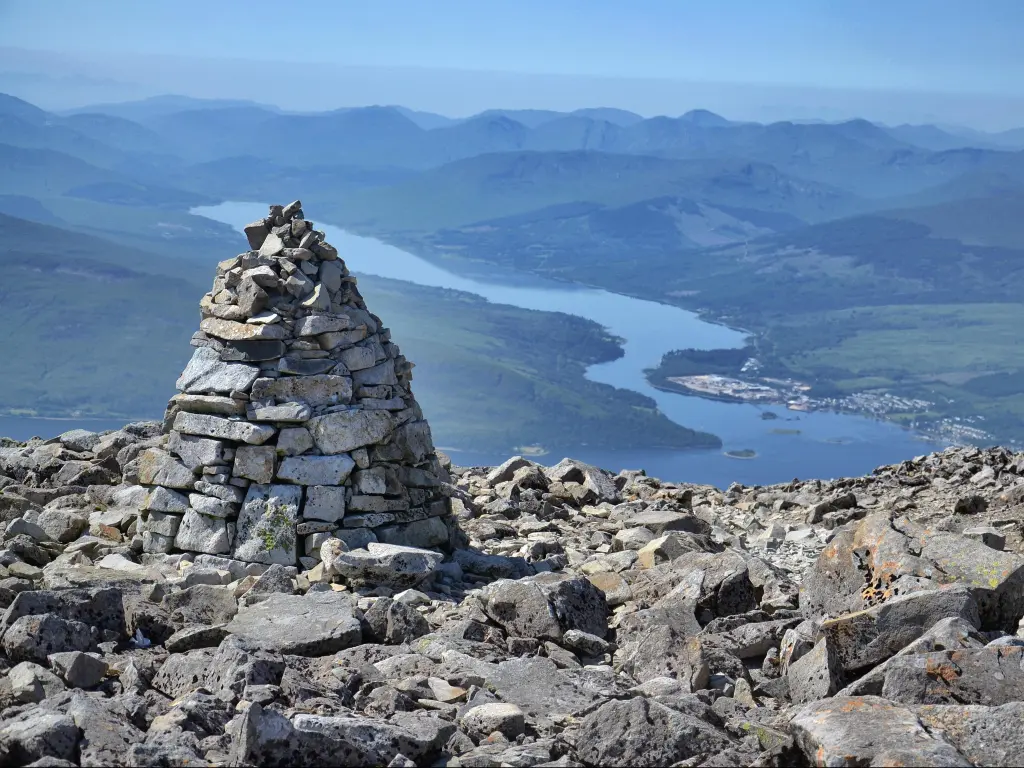
The Return Route
- Inverness - Around the city, Inverness Art Gallery, the Highlanders Museum, Inverness Castle and the 18th century Fort George are all worth a visit. Just outside the city, you'll find the Bronze Age Clava Cairns and Culloden Battlefield, site of the famous 1745 battle.
- The Cairngorms - One of the UK's top ski destinations, you can also hike here in summer for spectacular mountain views. Take the country's highest funicular railway to the Ptarmigan restaurant at the summit, or stop off in Aviemore for a lively apres-ski atmosphere.
- Pitlochry - In this charming town on the edge of the Highlands, you can tour the Blair Atholl whisky distillery, hike, or kayak on the nearby lochs.
- Perth - Scottish kings Macbeth and Robert the Bruce were crowned in Perth's Scone Palace. On the banks of the River Tay, this city is also home to the Black Watch Museum, dedicated to one of Scotland's most legendary regiments.
- Alnwick - Visit the vast Alnwick Castle, home of the Dukes of Northumberland for nearly 900 years, which doubled as Hogwarts in the Harry Potter films.
- Newcastle - The biggest city in the region is famous for its nightlife. If you're here in the daytime, immerse yourself in modern art at the Biscuit Factor, explore the Victoria Tunnel which runs right underneath the city or head to the nearby Beamish open-air museum.
- York - Potter around the Shambles, the medieval streets of this historic riverside city, explore its magnificent cathedral or learn about its Viking history at Jorvik Viking Centre.
- The Peak District National Park - A hiker's paradise, you'll find stunning views and picturesque villages across this national park. Visit Bakewell, one of the park's biggest towns, and nearby Chatsworth, a vast country house.
- Cambridge - Take to the water on the River Cam which runs beside many of the city's historic colleges. There are also several excellent museums to explore across the beautiful city centre.
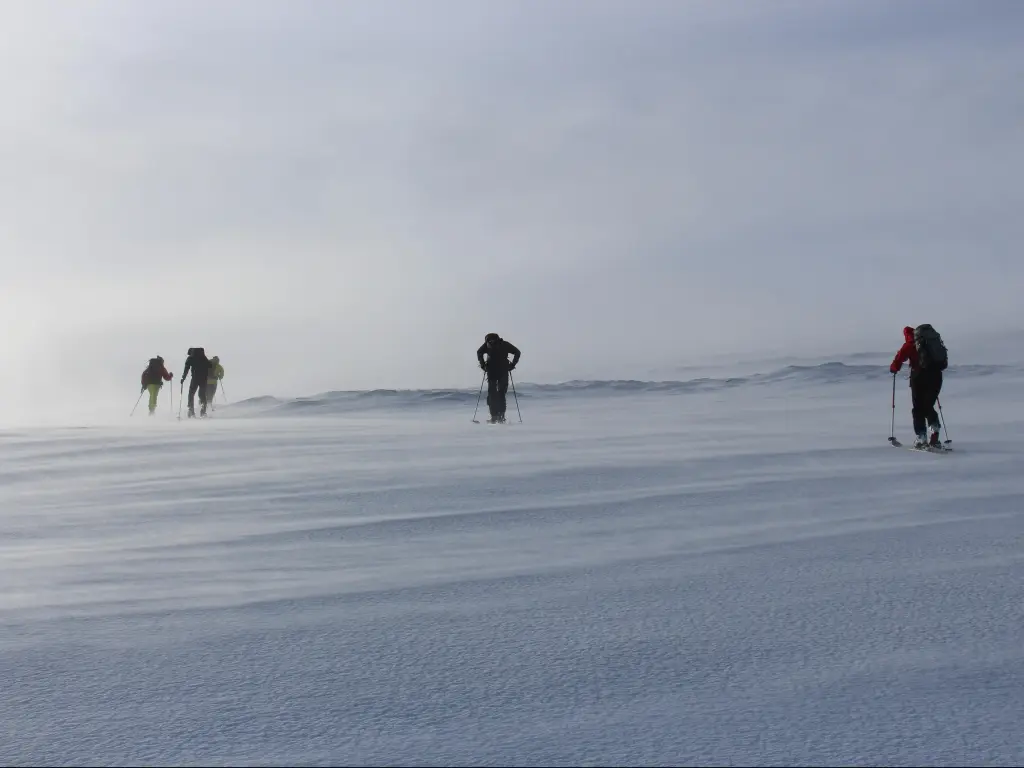
Best time to go on a road trip from London to Scotland
Scotland has four distinct seasons but all of them come with a chance of rain. Summers are cool, which can make for ideal hiking weather, and winters vary depending on where you are in the country. There's something to do whatever season you visit Scotland, but you'll have to tailor your trip to the conditions.
Scotland has cool, wet summers so pack accordingly. Average temperatures peak at around 17 degrees Celsius when you get as far north as Loch Ness, and rain is possible all through the summer. The days are long though, especially when you travel north, with the sun setting close to midnight.
With international theatre, dance and live music stars taking part in Edinburgh International Festival, and hundreds more independent and alternative acts featuring in the Fringe, accommodation is at a premium here in August, especially if you're looking for more affordable options.
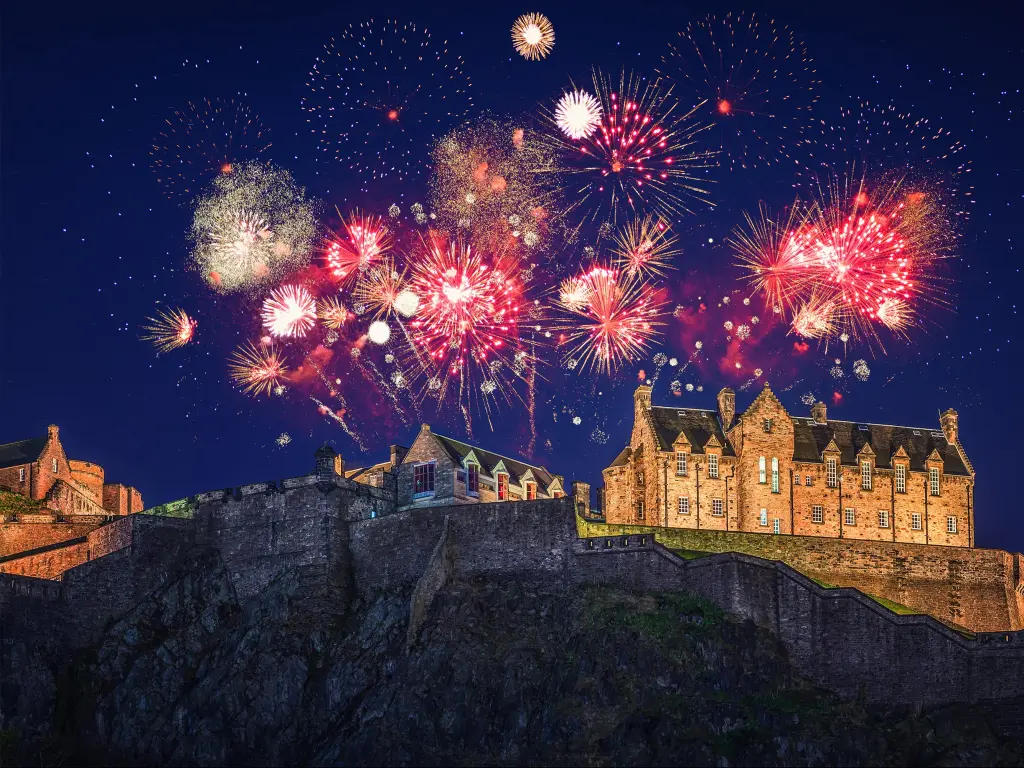
It often snows in the Highlands during winter, and with average temperatures sitting not far above freezing you should always drive cautiously as you travel through the north of Scotland and be prepared to adapt your route according to the conditions. Snow tyres aren't compulsory in the UK.
Outside the big cities, many attractions shut down over winter so check seasonal opening before you travel if you have something particular in mind. Don't let the short days catch you out either – sometimes you'll only get 5 hours of daylight. However, if you're lucky you might see the northern lights.
Further south in Scotland it stays a little warmer and snow is less common, but it can still get very wet.
There are plenty of events to keep you busy if you're travelling in the winter. Edinburgh's Hogmanay (new year) celebrations are legendary, but this means the city will be busy, with higher accommodation prices.
Look out for Burns Suppers and ceilidhs if you're travelling in January, celebrating the much-loved Scottish poet. The Celtic Connections festival in Glasgow also takes place in January, and you can enjoy live traditional music at events across the city
Spring and autumn are both cool in Scotland, with average temperatures of 11 degrees in April and 13 degrees in October. As with summer and winter, it rains frequently.
Further north you still might encounter icy conditions all through spring. May is a popular time to visit, with temperatures approaching their peak of 15 degrees and trees and flowers in bloom, but take repellent if you're planning on exploring the hills to ward off the infamous midges.

